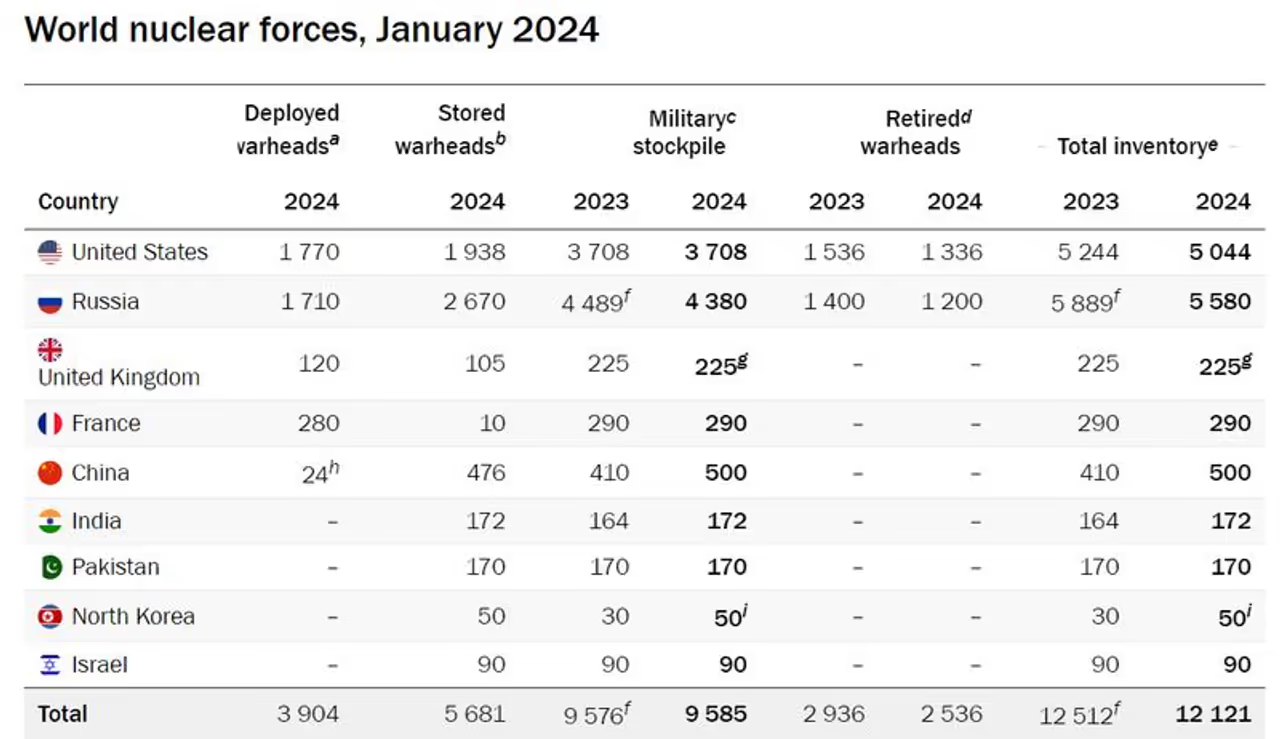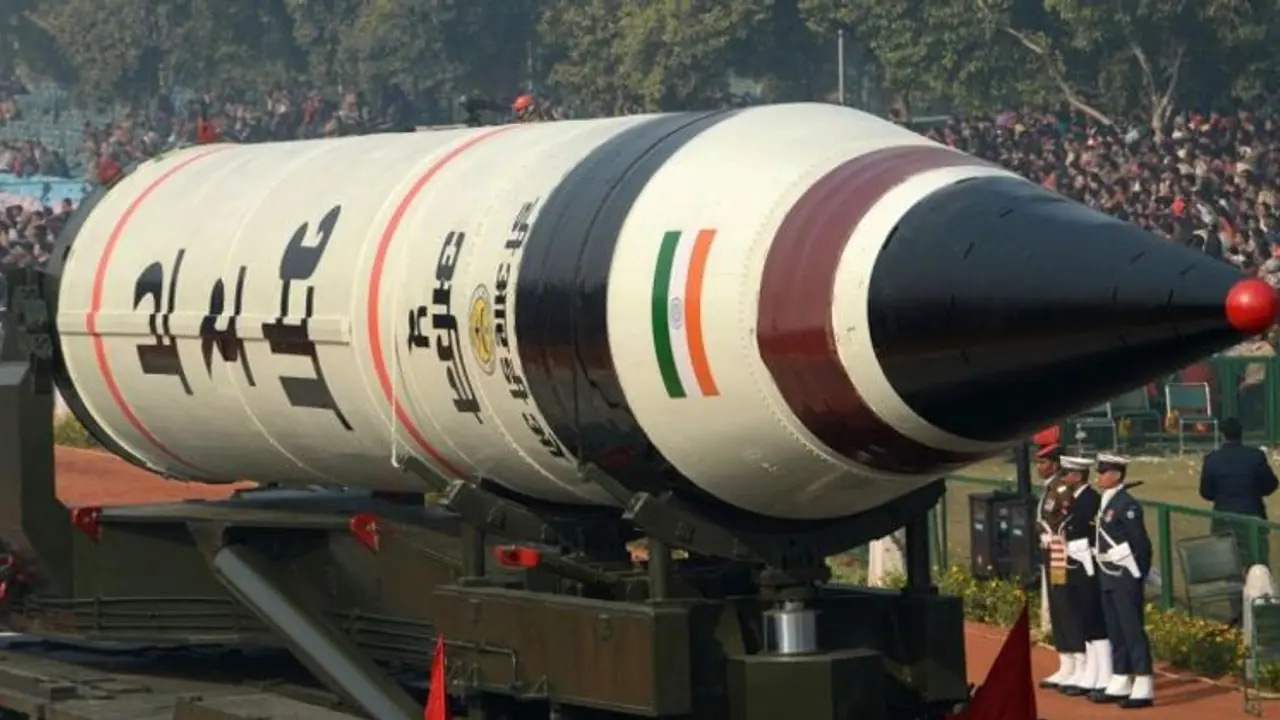China is expanding its nuclear arsenal more rapidly than any other country, now possessing three times the number of warheads that India has, according to a report released on Monday by SIPRI.
China is expanding its nuclear arsenal more rapidly than any other country, now possessing three times the number of warheads that India has, according to a report released on Monday by the Stockholm International Peace Research Institute (SIPRI), a Swedish think tank. Additionally, some of China's warheads are deployed on ballistic missiles at "high operational alert."

Meanwhile, Pakistan maintains a rough parity with India in terms of the number of nuclear warheads. Russia and the US remain far ahead of all other countries, together accounting for 90% of the world's nuclear weapons.
The SIPRI analysis indicates that China's nuclear warheads increased from 410 in January 2023 to 500 by January 2024, with further growth anticipated. India has 172 (from 164 in 2023) warheads, while Pakistan has 170 (unchanged from 2023) warheads.
The Indian defense establishment, however, remains confident in its strategic deterrence capabilities, which are set to be further enhanced following the first test of the Agni-5 ballistic missile with a range of over 5,000 km and multiple-warhead capability on March 11 this year.
Additionally, India is increasingly adopting canister-launch missiles, where the warhead is pre-attached to the missile. This approach ensures operational readiness and offers flexibility for long-term storage, rapid transport via rail or road, and immediate launch when necessary.
India is also poised to bolster its weakest leg of the nuclear triad by commissioning its second SSBN (nuclear-propelled submarine armed with nuclear-tipped ballistic missiles), INS Arighat, within the next few months. The first SSBN, INS Arihant, became operational in 2018.
According to SIPRI, the role of nuclear weapons as a deterrent has increased amid ongoing geopolitical turmoil, such as the Russia-Ukraine conflict and the Israel-Hamas conflict. All nine nuclear-armed states continue to modernize their arsenals, with several deploying new nuclear-armed or nuclear-capable weapon systems in 2023.
The current nuclear stockpiles are as follows: Russia has 4,380 warheads, the US has 3,708, France has 290, the UK has 225, Israel has 90, and North Korea has 50. Of these, an estimated 3,904 warheads are deployed on missiles and aircraft, while the remaining warheads are kept in storage.

"Around 2100 of the deployed warheads were kept in a state of high operational alert on ballistic missiles. Nearly all of these warheads belonged to Russia or the USA, but for the first time China is believed to have some warheads on high operational alert," SIPRI said.
In a report last October, the Pentagon projected that China is on track to exceed 1,000 warheads by 2030, alongside building a robust arsenal of intercontinental ballistic missiles (ICBMs). The Swedish think tank noted that China could potentially match Russia or the US in the number of ICBMs by the end of the decade, despite maintaining a significantly smaller stockpile of nuclear warheads compared to these countries.
SIPRI also highlighted that India, Pakistan, and North Korea are all developing the capability to deploy multiple warheads on ballistic missiles, a capability already possessed by the US, UK, Russia, France, and China.
This would enable a rapid potential increase in deployed warheads, as well as the possibility for nuclear-armed countries to threaten the destruction of significantly more targets," it said.
8 key takeaways from SIPRI report
1. Nine nations possessing nuclear weapons—US, Russia, UK, France, China, India, Pakistan, North Korea, and Israel—persisted in modernizing their nuclear arsenals in 2023, with several introducing new nuclear-capable weapon systems.
2. India's "stored" nuclear warheads were 172 in January this year, while the number for Pakistan was 170.
3. In 2023, India modestly increased its nuclear arsenal while both India and Pakistan continued developing new types of nuclear delivery systems.
4. According to the SIPRI report, while Pakistan remains the primary focus of India's nuclear deterrent, India is increasingly emphasizing longer-range weapons, including those capable of targeting locations across China.
5. Approximately 2,100 deployed warheads were maintained in a state of high operational alert on ballistic missiles, with nearly all belonging to either Russia or the US. Notably, China is reported to have placed some warheads on high operational alert for the first time.
6. Russia and the US collectively possess nearly 90% of the world's nuclear weapons.
7. According to the watchdog, Russia has reportedly deployed approximately 36 more warheads with operational forces compared to January 2023.
8. The report also noted that China's stockpile of nuclear warheads is anticipated to remain significantly smaller than those of Russia or the US.
